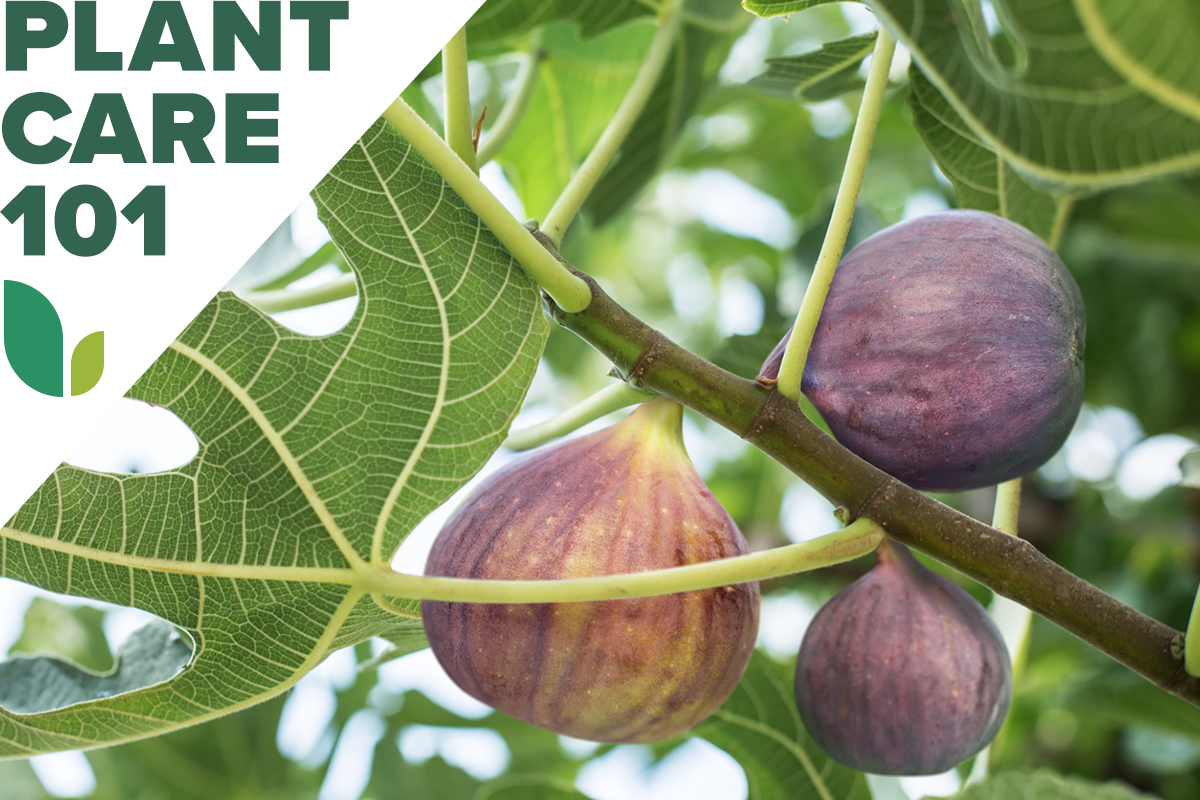We may earn revenue from the products available on this page and participate in affiliate programs. Learn More ›
Eaten fresh from the tree or cooked in a multitude of dishes, figs are a favorite naturally sweet snack packed with nutritional goodness.
One of the oldest “fruits” in recorded history, figs grow on trees that are fairly easy to cultivate. They aren’t actually a fruit but a syconium, or mass of inverted flowers. Common fig tree care begins with warmth, although the fig tree can adjust to other climates, and it needs rich, well-drained soil. However, the adaptable fig tree plant can tolerate a range of soil types. An attractive tree with deeply lobed leaves, full-grown fig trees are capable of producing hundreds of delicious fruits each year.
Growing Fig Trees at a Glance
Common Name: Fig tree
Scientific Name: Ficus carica
Hardiness Zone: 6 through 10
Soil: Rich, well-drained; neutral or 6 to 6.5 pH
Light: Full sun
Water: Enough to keep soil consistently moist
Food: Not needed if soil is fertile; otherwise, add a balanced fertilizer or 14-5-22
Propagation: Stem cuttings
Safety: Sap can cause skin irritation or gastric upset
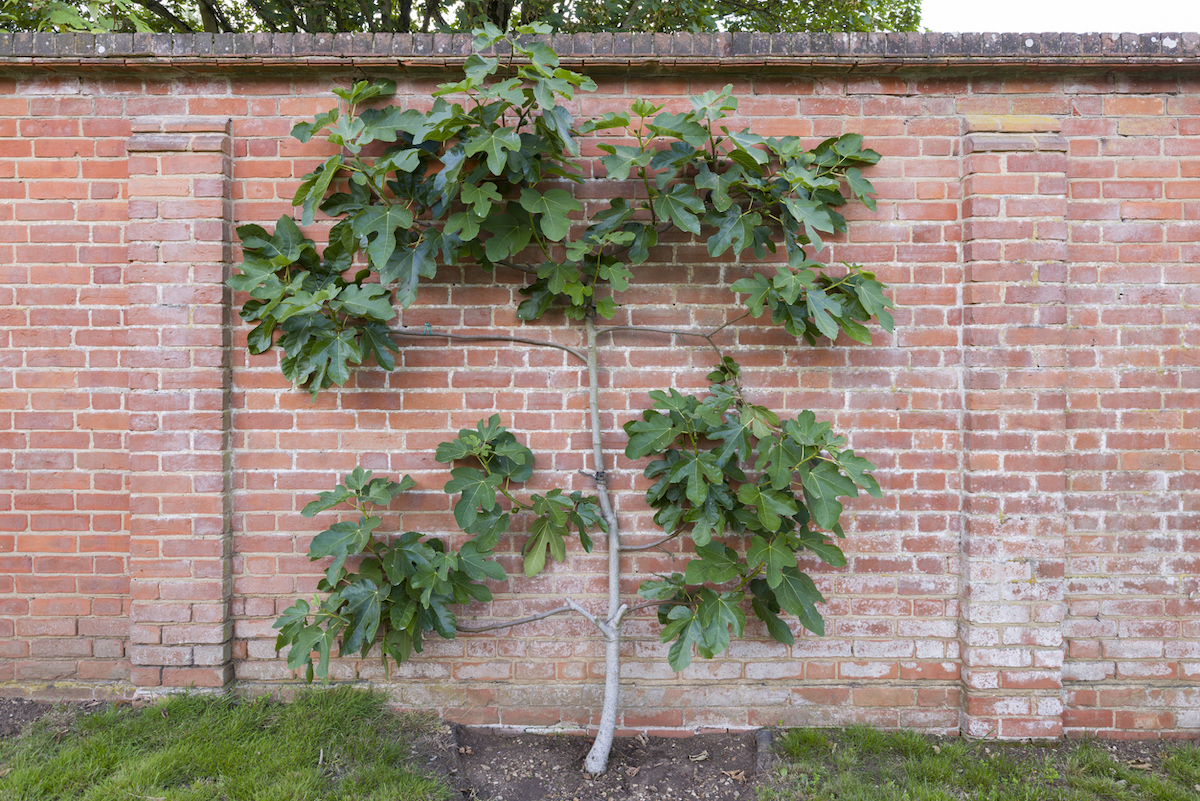
Fig Tree Characteristics
There are at least 800 varieties of figs, from the familiar houseplant varieties such as weeping fig, rubber tree, and fiddle leaf fig to several fruiting varieties best grown outdoors. Some species are epiphytes with aerial roots. All of them are part of the mulberry family.
The fig is a low-maintenance, fast-growing tree capable of producing hundreds of figs once it reaches maturity. Care for fig trees is minimal.
Originating in Mesopotamia and Persia, the common fig—Ficus carica, the edible fig—is one of the first cultivated fruit trees. Humans have been eating figs for centuries. Its teardrop-shaped fruits (which are technically inverted flowers) are small. All parts are edible, including the green or purple outer shell. The flesh is dark pink and has a flavor so sweet it’s often sought after for desserts and snacks when dried.
Recommended Fig Tree Varieties
There are hundreds of varieties of figs. Some of the most common types found in the U.S. include:
- Brown Turkey: A resilient plant and producer of medium- to large-size figs (in abundance) that feature a mildly sweet taste and brownish-purple skin, this variety is reasonably tolerant of cooler temperatures.
- Kadota: Known as a vigorous producer of fruit with a light green skin and amber flesh, this fig, known as the white fig, has a honeyed sweetness and slightly nutty flavor, with a smooth, tender texture.
- Black Mission: A classic favorite, this small- to medium-size variety produces fruit with dark purplish-black skin that has a rich, sweet flavor and a dense, chewy texture.
- Celeste: A winter-hardy variety, this fig produces small- to medium-size fruit with a light brown or violet exterior, thin and tender skin, and pink flesh with a honeyed flavor.
- Hardy Chicago: A winter-hardy fig known for its medium-size fruit with brownish-purple skin and deep red flesh, this fig offers a sweet, robust, complex flavor with notes of honey and berries, along with a tender, chewy texture.
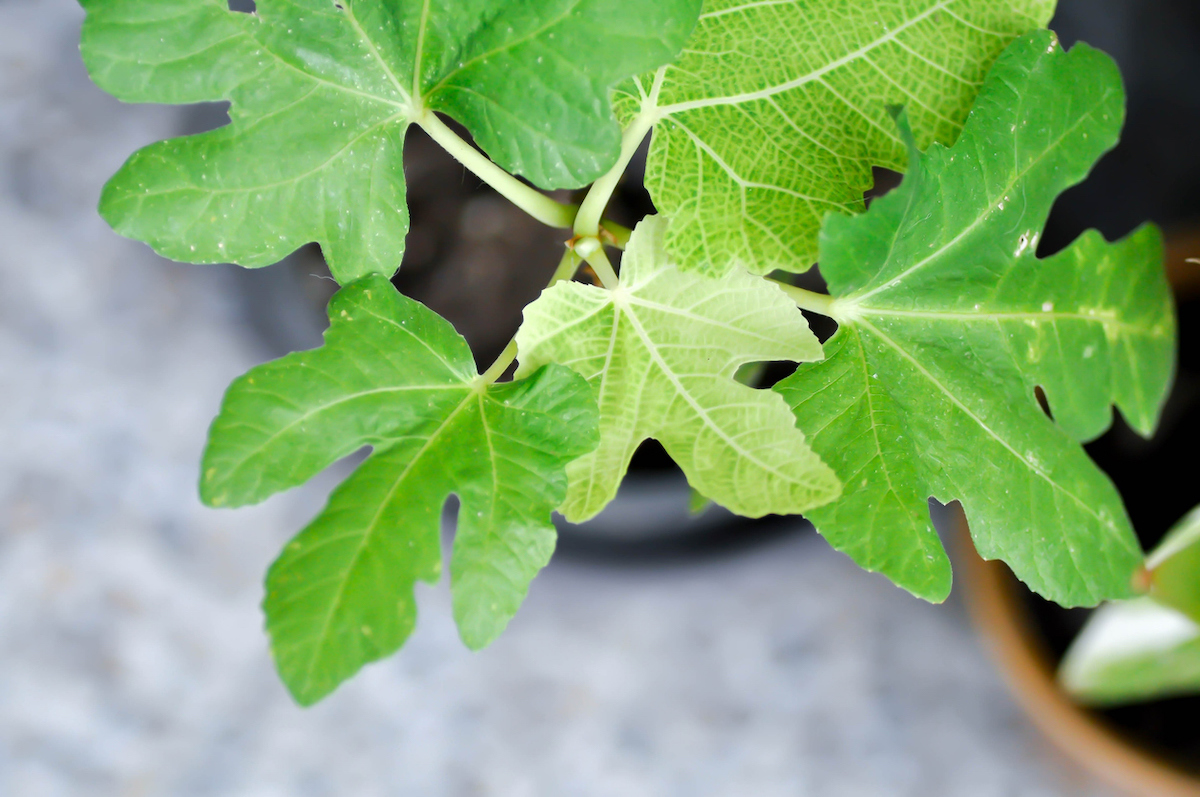
Planting Fig Trees
Whether you plan on planting fig trees yourself or you prefer to hire a professional to do the job, be sure to source one from a reputable nursery to avoid nematode infestation. Select the variety best suited to your USDA growing zone, soil and light conditions, and space.
When is the best time to plant a fig tree?
The best time to plant a fig tree is when it’s dormant, which is typically early spring or late fall. Planting them during cool weather allows them to get established before summer’s heat arrives. While figs need protection from frost and freezing winter weather, they do need about 100 hours of chilly weather in order to set fruit.
Where can fig trees grow?
Fig trees are best grown in locations that receive 6 to 8 hours of sunlight per day. They prefer rich soil high in organic matter that is kept moist but not soggy. Most figs are best suited to USDA Zones 7 through 10, but some varieties can handle the colder temperatures of Zone 6.
How do you plant a fig tree?
Before planting, it’s wise to test your soil and amend as needed with compost, which is especially beneficial for fig trees.
- Dig a hole twice the width of the root ball and slightly deeper.
- Place the plant in the hole and backfill with soil.
- When planting fig trees, be sure to space them 15 to 20 feet apart. If you’re planning for bushy, low-growing shrubs, they need to be only 10 feet apart.
- Stake the plants to ensure upright growth.
- Mulch and water.
Can you grow fig trees in containers?
At approximately 18 feet tall, fig trees are not big. They will stay even smaller when grown in a container because their roots won’t have as much space to spread. There are a few upsides to this, however. Growing them in a container forces them to produce more fruit, and a container can be moved, allowing them to take shelter from the cold or take advantage of the sun.
It’s important to ensure the container provides adequate drainage and that the fig tree gets enough water, especially during hot weather.
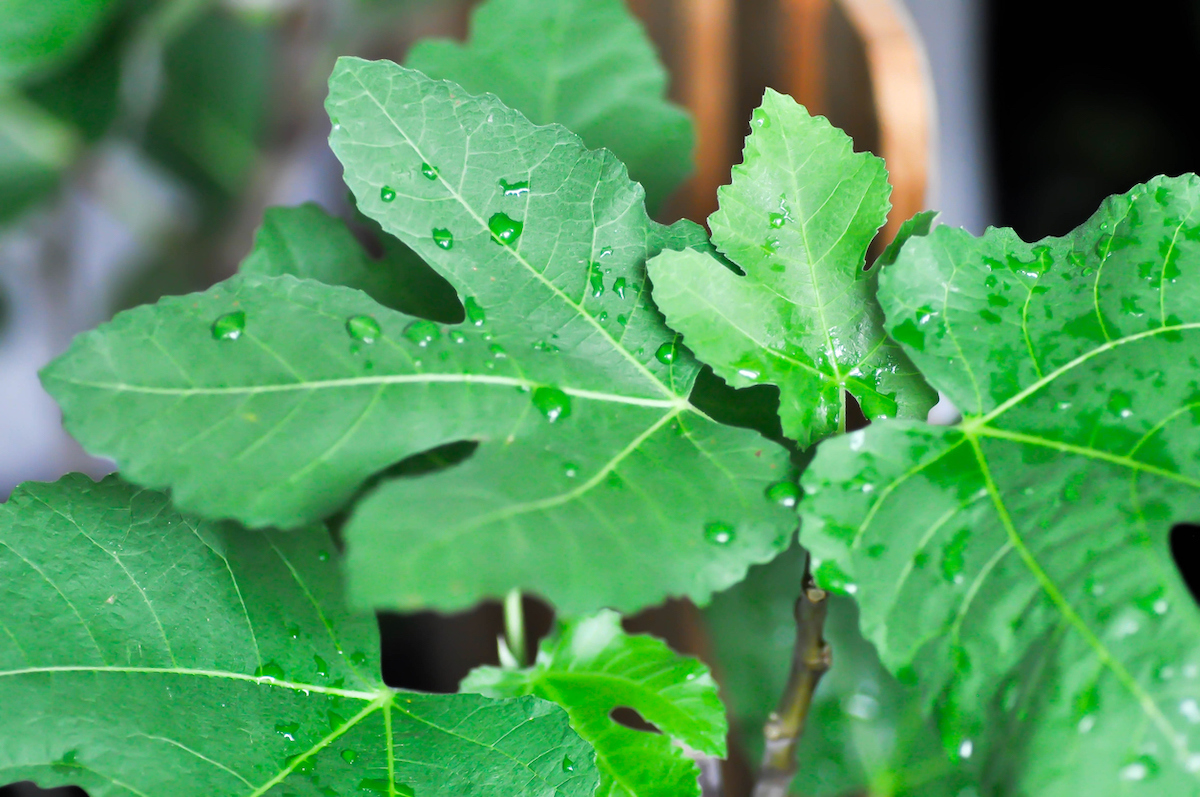
Watering Fig Trees
Because the roots of fig trees grow near the soil’s surface, regular watering is part of basic fig tree maintenance, especially when the plants are young. They like moist soil. Depending on the amount of precipitation fig trees receive and the soil type, supplemental water may be necessary every 1 to 2 weeks.
Mature trees can withstand brief periods of drought and may not need additional watering. However, if the roots dry out, it can result in fruit drop. Deep watering is best. If the tree’s leaves turn yellow and drop, there’s a good chance it was probably overwatered.
Fertilizing Fig Trees
Unless your fig is container-grown, fig tree fertilization is probably not necessary. If growth is slow (less than 12 inches per growing season), some gardeners suggest adding ½ to 1 pound of nitrogen supplement over the course of three or four feedings. This regimen should begin in late winter and end in midsummer.
Other experts advise applying an all-around slow-release fertilizer with a 14-5-22 ratio in the spring and giving your tree an additional high-potassium fertilizer feeding during the growing season.
Pollination
Wild figs are pollinated internally by a fig wasp attracted by a scent the fig releases. A female wasp crawls inside the fruit to lay her eggs and then dies. When the eggs hatch, the young wasps escape from the fruit, carrying pollen with them.
Cultivated varieties are self-fertile; therefore, they don’t need a pollinator. Nursery-bought fig plants are female and produce fruit without pollination. This is because the wasp needed to fertilize wild figs isn’t in this ecosystem.
Pruning Fig Trees
When fig trees are first planted, they should be pruned back by about half to allow the plant to focus on establishing strong roots. Once the tree is established, it should be pruned annually in late winter before it comes out of dormancy.
Pruning will not only promote good health for the tree, but it can also boost fruit production because it encourages new growth. Fruit appears on new growth.
Always remove dead or diseased branches. Prune inside branches if the tree has become “congested,” and shape to suit.
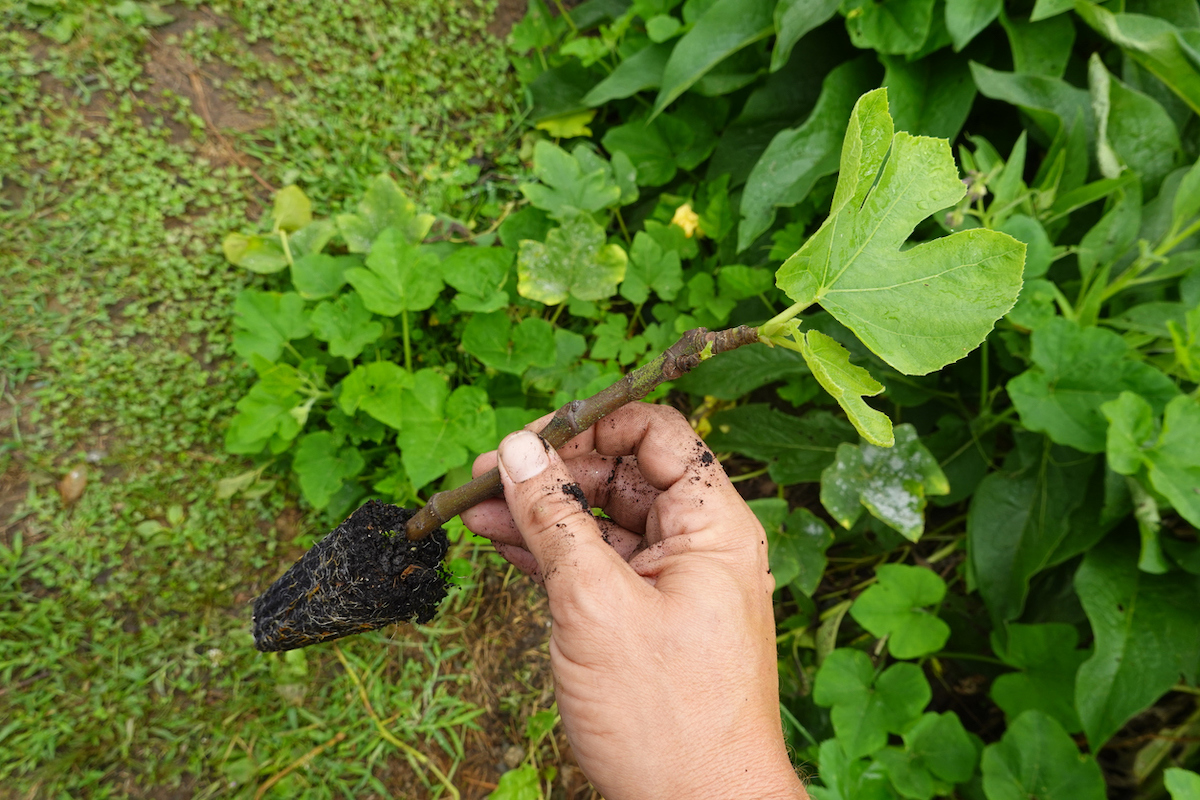
Propagating Fig Trees
Stem cuttings are an easy way to propagate fig trees. Take an 8- to 10-inch cutting from a branch in late winter and set it in high-quality, well-drained soil with one bud above the soil line. Keep the soil moist until roots develop and leaves form. The stem cuttings grow quickly and should be ready for transplanting by autumn.
Fig trees can also be grown from seed. Ensure the seed is ripe, then soak it for 24 hours to soften the “coat.” Plant it in quality soil about ½ inch deep. Keep the soil moist and set the container in full sun.
Figs can also be air-layered, ground-layered, or grafted.
Safety Considerations
The fig plant produces a white sap in its foliage and shoots that contains psoralen and bergapten. These are organic compounds that can cause skin irritation on contact or gastric issues (particularly in children and pets) when ingested. Pets may foam at the mouth after eating parts of the plant, although the fig itself doesn’t seem to cause any harm.
The sap is activated by the sun. When it makes contact with the skin, it can cause phytophotodermatitis, which can cause reactions such as redness, itching, burning, or blisters.
Figs can cause digestive problems and diarrhea, interfere with blood thinner medications, or trigger allergies.
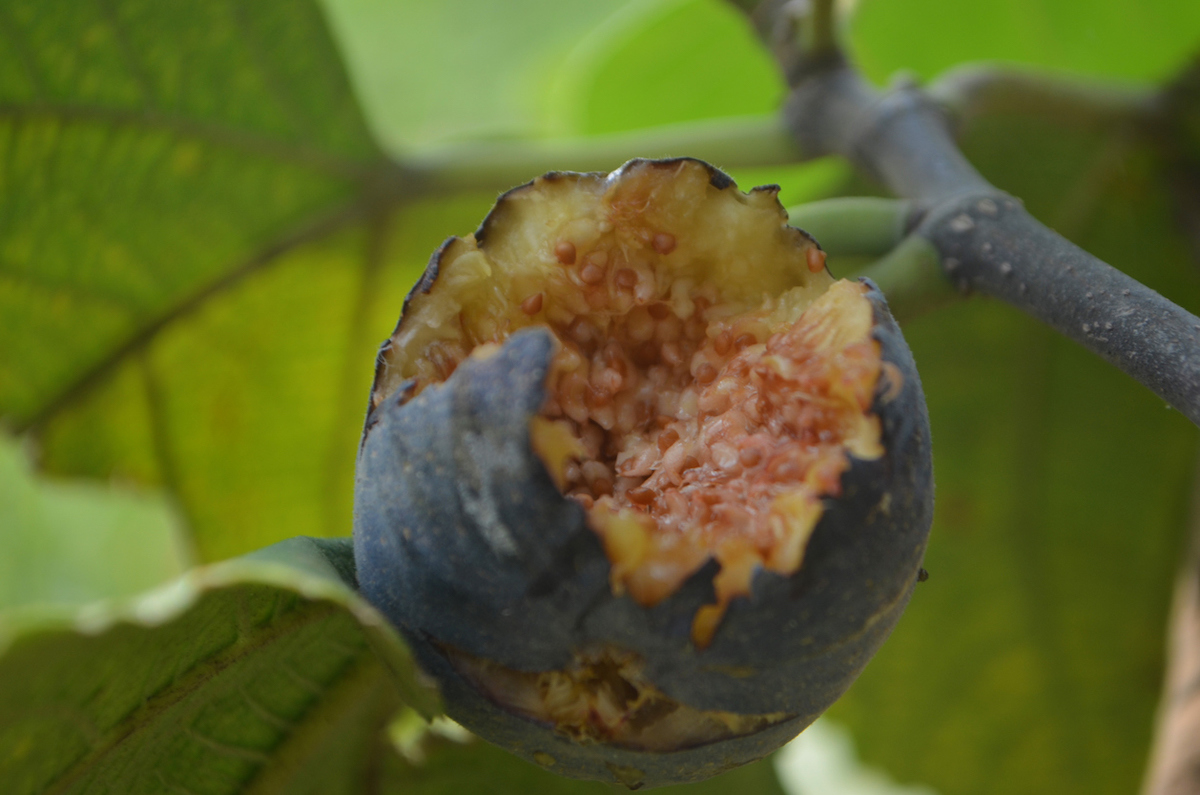
Potential Pests and Diseases
When learning how to care for a fig tree, it’s important to be on the lookout for pests and diseases. Figs aren’t typically prone to disease. However, they can succumb to fig rust, which is a fungal infection that results in rust-colored spots on leaves. They might also experience leaf spot (a fungal or bacterial infection that results in spots on leaves that may fall off), mosaic virus, endosepsis, or anthracnose.
Pests include nematodes, stem borer, mealybugs, fruit flies, aphids, and scale. Birds and fig tree leaf beetles may also be a concern. Netting or traps can reduce fruit fly infestation and keeps birds and squirrels from taking the fruit.
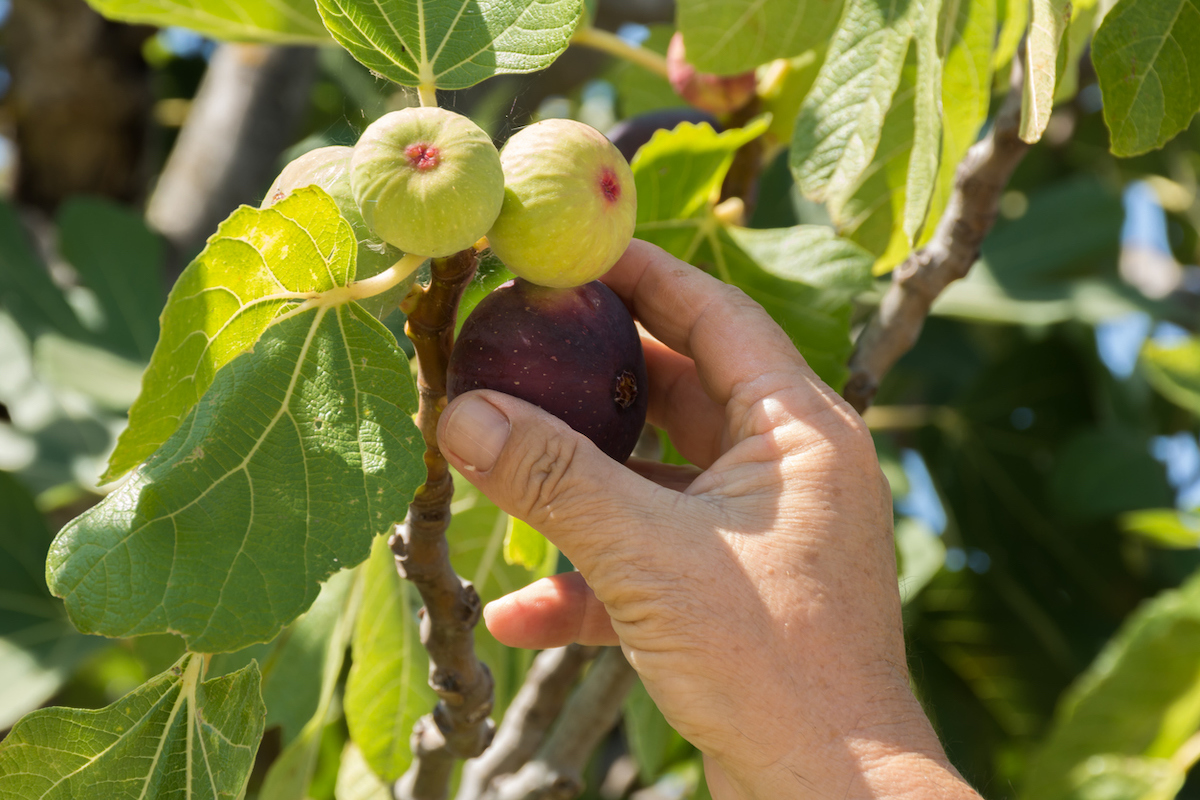
Harvesting Figs
Be patient. Fig trees take about 3 to 5 years to mature to the point of bearing fruit.
When is the best time to harvest figs?
Figs are usually ready to harvest sometime between August and October. You should be able to notice a subtle color change (usually a darkening of the skin) when figs are ripe. They should also feel slightly soft. The fruit will dangle, as the neck wilts or dies when fruit is ripe.
The best time to pick figs is early in the morning before the sun gets too high and the temperatures get too warm.
How do you harvest figs?
Figs should be left on the tree until they are ripe; they do not continue to ripen after they’ve been picked.
- Put on gloves to avoid the skin-irritating sap the trees produce.
- Gently pull on the fruit, taking care not to bruise it.
- Leave some of the stems behind; this reduces spoilage.
How do you store figs?
Figs are highly perishable, so they are best eaten within a couple of days of harvesting. Keep them at room temperature and allow air to circulate around them. They will keep in the refrigerator for 2 or 3 days, but chilling detracts from the flavor.
Long-term storage options include flash-freezing, canning, or drying. Figs can last for 3 to 6 months in the freezer. Dried figs can last a month at room temperature or 6 to 12 months in the refrigerator. Canned figs should be used within a year.
Looking for more fruit trees? Check out our guides on growing apples, indoor fruit trees, and bananas.

